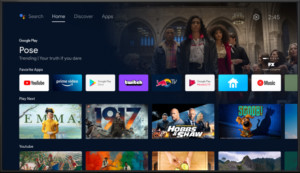The State of Sports Television: Persistent Inequality in Women’s Sports Coverage
The roar of the crowd, the thrill of victory, the agony of defeat – these are the hallmarks of sports. But when it comes to Sports Television, a significant disparity exists: the overwhelming dominance of men’s sports coverage. A 2019 USC/Purdue University study reveals a stark reality for women’s sports, highlighting the persistent lack of representation on television news and sports highlights shows. This imbalance raises critical questions about the role of sports television in shaping public perception and perpetuating gender inequality in athletics.
The “Big Three” and the Media Blackout
The study, a longitudinal analysis of sports news coverage spanning three decades, found that a staggering 95% of television coverage, including ESPN’s flagship program SportsCenter, focused on men’s sports. This bias extends beyond traditional media, permeating social media posts and online sports newsletters. While there have been incremental improvements in live televised coverage of women’s sports, the crucial areas of news and highlights remain stubbornly resistant to change.
This disproportionate focus on men’s sports, particularly the “big three” of football, basketball, and baseball, creates a self-perpetuating cycle. Consistent media exposure generates audience familiarity, fuels excitement, and ultimately drives revenue. Meanwhile, the lack of comparable coverage for women’s sports hinders the growth of fan bases and reinforces the marginalization of female athletes.
Beyond Quantity: The Quality of Coverage
The limited coverage women’s sports does receive often suffers from qualitative deficiencies. While overt sexism in reporting has largely diminished, it has been replaced by a “gender-bland sexism,” characterized by perfunctory and unemotional reporting. Even major events like the Women’s World Cup, which generate temporary spikes in coverage, fail to translate into sustained and meaningful attention for women’s sports.
Furthermore, the study reveals a disparity in the types of stories highlighted. Charitable contributions by male athletes are frequently showcased, while the community engagement and social activism of female athletes are often ignored. This selective reporting contributes to a narrow and often stereotypical portrayal of women in sports.
Digital Platforms: A Missed Opportunity
The researchers expanded their analysis to include online sports newsletters and Twitter feeds, anticipating that the lower production costs and ease of content creation in digital media would lead to greater parity. However, they found only a marginal increase in coverage of women’s sports on these platforms, further underscoring the systemic nature of the problem.
The Pandemic and Beyond: A Turning Point or a Temporary Shift?
The study predates the COVID-19 pandemic, which disrupted traditional sports schedules and created opportunities for leagues like the WNBA to gain increased visibility. The WNBA’s success in capitalizing on this moment raises questions about the potential for lasting change. However, history suggests that returning to “normal” could mean a reversion to old patterns.
The persistent underrepresentation of women’s sports on television is a complex issue with far-reaching consequences. Addressing this imbalance requires a concerted effort from broadcasters, media organizations, and sponsors to invest in women’s sports, promote compelling narratives, and cultivate a broader audience for female athletic achievement. Until then, sports television will continue to reflect a skewed reality, failing to showcase the full spectrum of athletic talent and perpetuating gender inequities in the world of sports.








